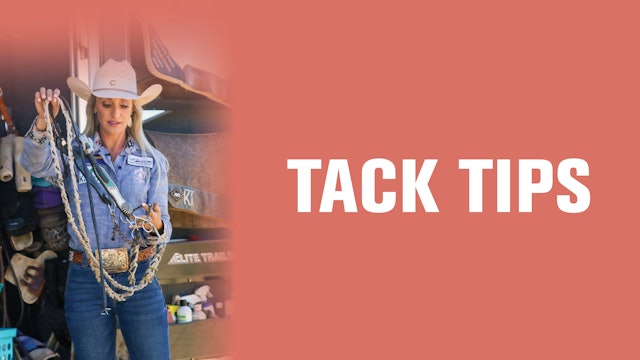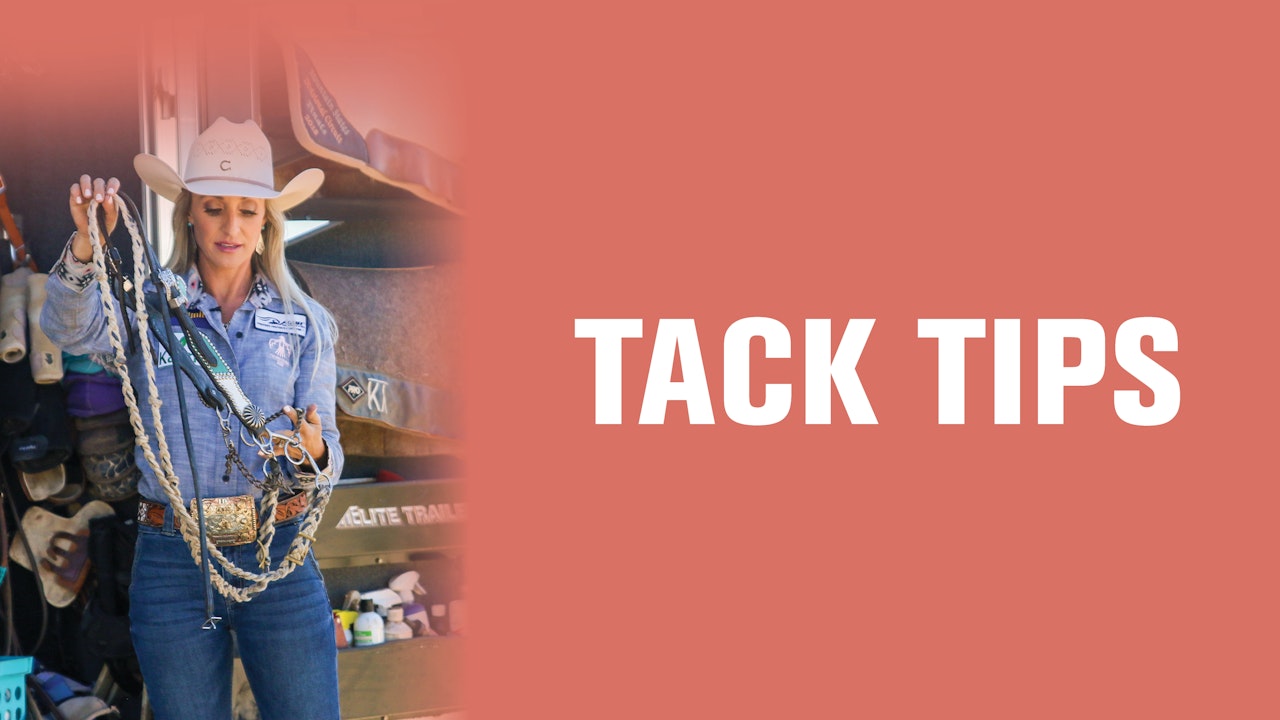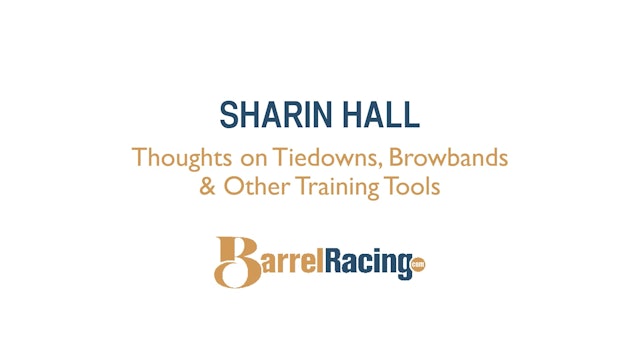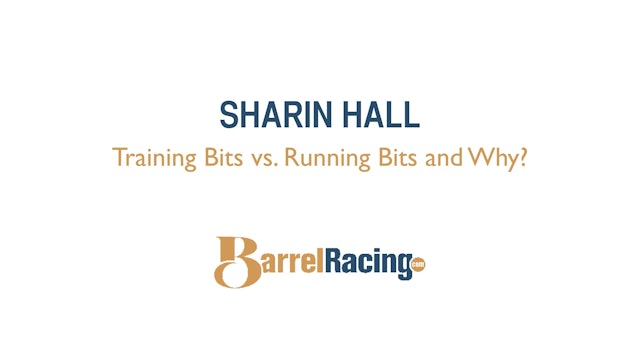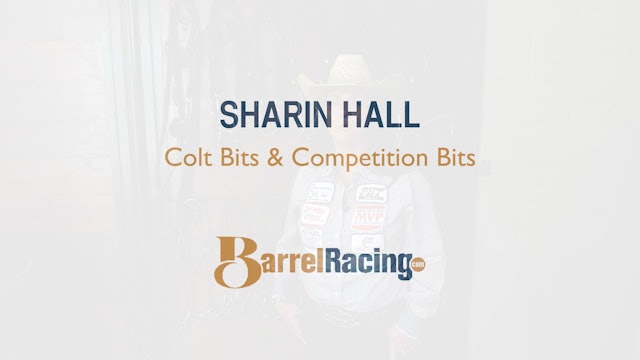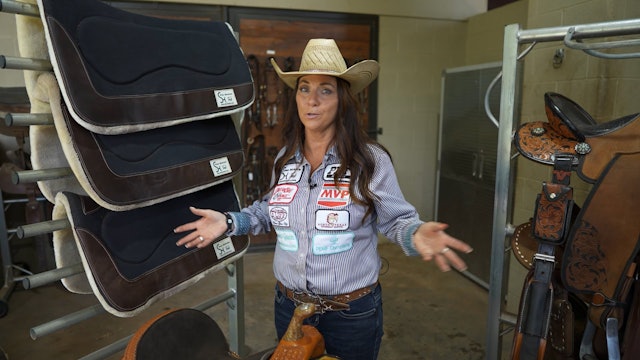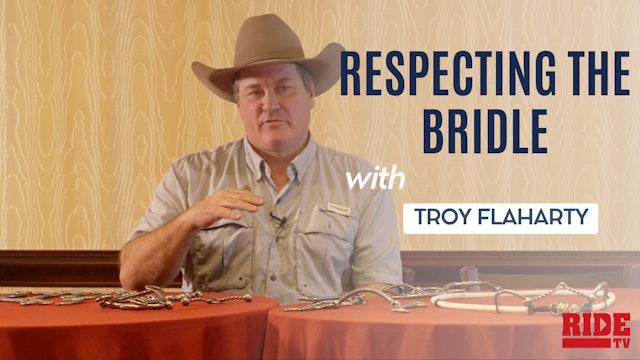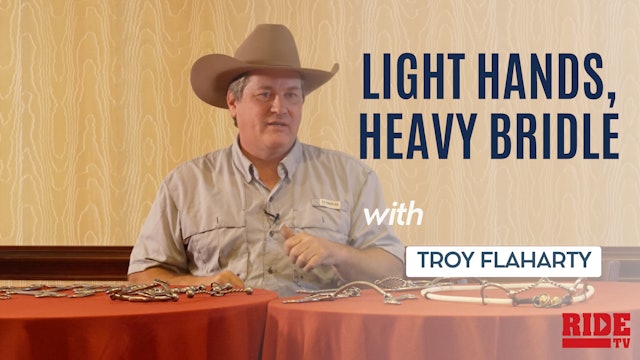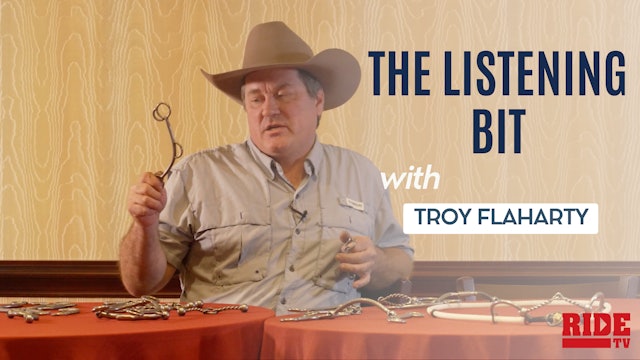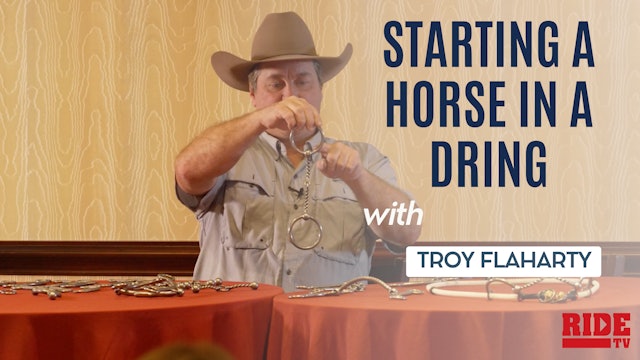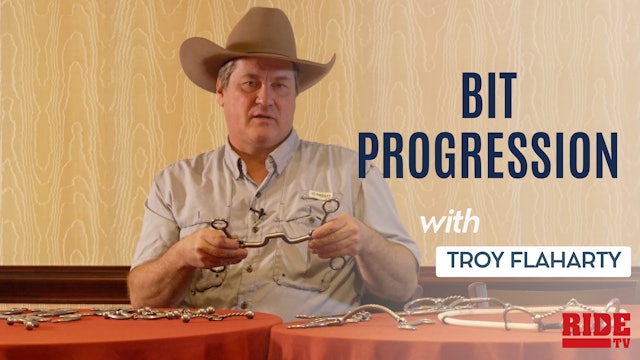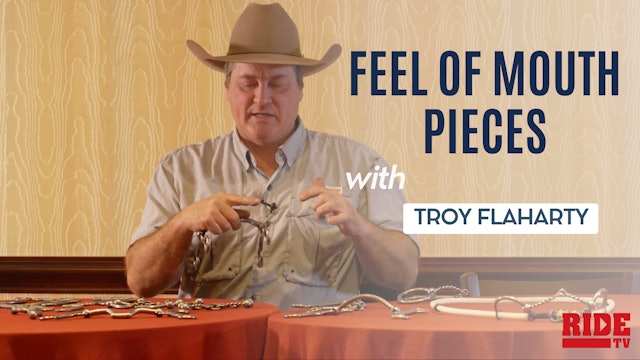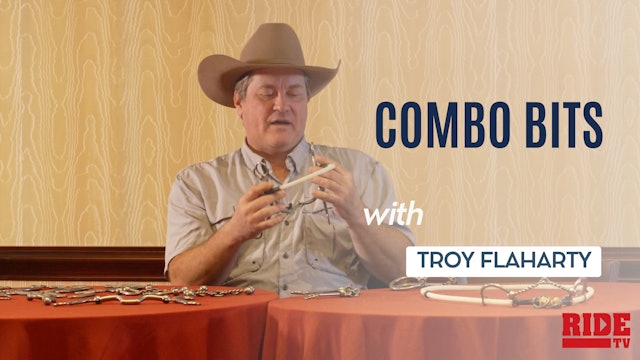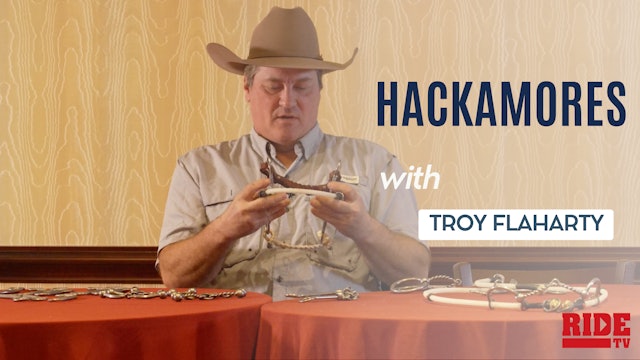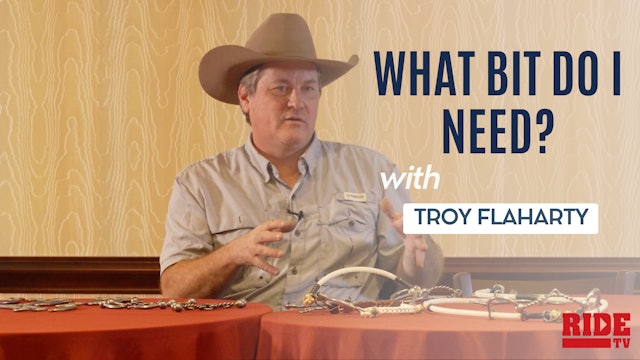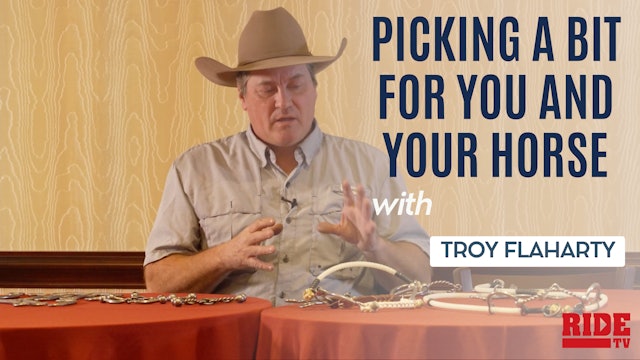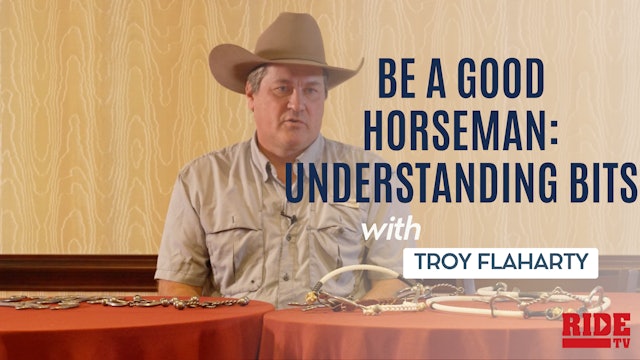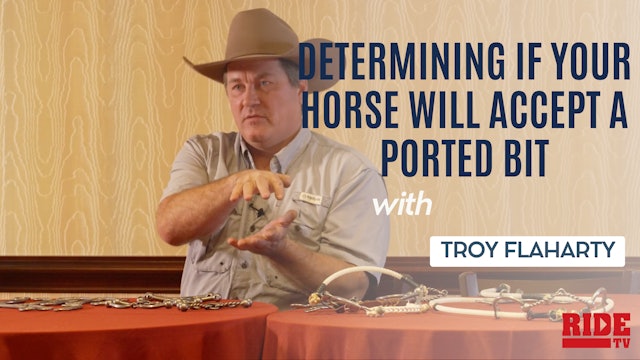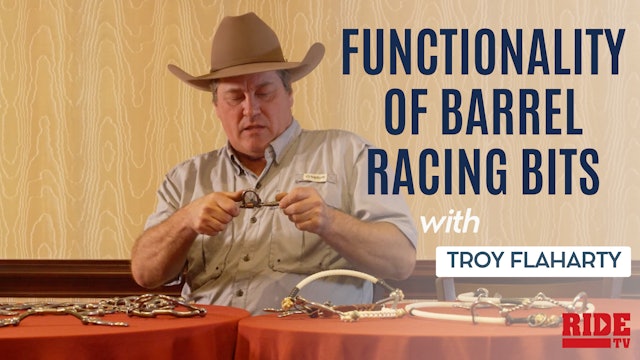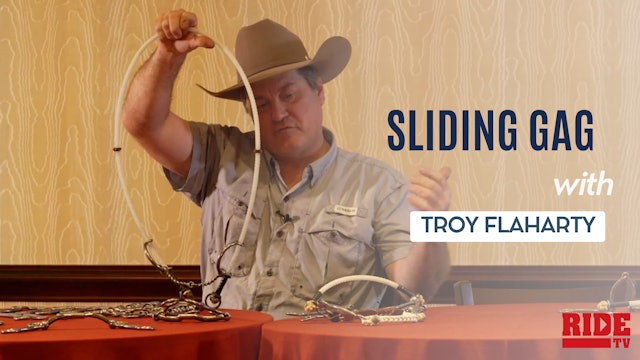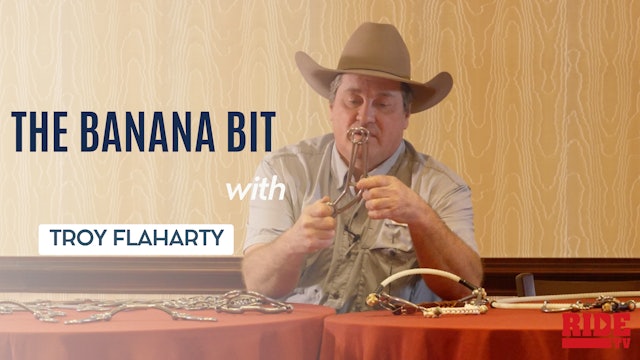Tack Tips
Good tack, gear and equipment are crucial for barrel racing as they ensure the safety and comfort of both the rider and their horse, aiding smooth and efficient runs. Find out what our coaches are using and why, plus how you can incorporate them into your own riding. The "Tack Tips" series on Ride TV provides essential advice for selecting and using tack and gear to optimize both rider and horse performance. Featuring expert insights from top trainers like Molly Powell and Sharin Hall, the series covers various aspects of tack, including saddle design, bit selection, and the use of reins and stirrups. Each video highlights how different equipment choices contribute to comfort, safety, and efficiency, helping riders of all levels improve their skills.
-
Seat Size for Support
Molly Powell talks about how she designed the seat on her line of saddles with the help of her dad.
-
Why Jordon Prefers a Ported Bit on her 4-Year-Old
Jordon Briggs talks about the reasons she works her 4-year-old in a shanked and ported bit because of his body type and personality.
-
Gaining Support from Stirrups
Molly Powell talks through how she uses her stirrups and what she checks pre-ride, plus how she builds her saddles.
-
When to Ride With Split Reins
Leading barrel futurity horse trainer Sharin Hall talks about when she uses split reins and why.
-
Thoughts on Tiedowns, Browbands & Other Training Tools
Professional barrel racer Sharin Hall has specific reasons for the training tools she uses and explains in what rare cases she incorporates a browband, draw ropes, and similar tools.
-
Training Bits vs. Running Bits and Why?
Leading barrel horse trainer Sharin Hall answers the common question of if she trains and runs in the same bit, and if so when and why this would apply.
-
Colt Bits & Competition Bits
Leading barrel horse trainer Sharin Hall discusses her exclusive bit designs and how each one works at various stages in her program, from riding colts all the way through to highlevel competition.
-
The Pro Series Orthopedic Saddle Pad
Professional barrel racer Sharin Hall talks about the materials used in her Pro Series Saddle Pads and the reasons she so meticulously incorporated each element into her pad design.
-
The Inspiration for Sharin Hall Pro Series Saddles
The reasons behind Sharin Hall's saddle design and how her saddles are built to last as well as function to help riders achieve a centered, balanced seat.
-
Respecting the Bridle
Troy explains the importance of teaching your horse to respect the bridle. This plays a key role in bit selection for your horse.
-
Light Hands, Heavy Bridle
Troy Flaharty explains why a heavy bridle and light hands or a light bridle and heavy hands are a good combination for achieving the desired reaction from your horse.
-
The Listening Bit
The listening bit is a good tool for a horse that needs a quick correction. Troy explains why the bit is useful, but isn't for every horse or rider.
-
Starting a Horse in a DRing
Colt starters like a few different bits to start young horses in. Learn about why Troy likes to use a Dring when starting young horses and how it helps to teach them essential skills for barrel racing.
-
Bit Progression
Bit progression depends on the horse, but knowing which bits make good next steps is something all riders should know. Troy breaks down bit progression for what he likes and his regular clients like.
-
Feel of Mouth Pieces
If you've ever wondered the difference in a smooth or square twist would feel like in a horse's mouth, Troy explains it here.
-
Combo Bits
Combination bits have been a mystery to many in the barrel racing industry. Troy explains how his combination bits function and what type of horse may benefit from using one.
-
Hackamores
Hackamores are like many other bits, being that only certain horses will be successful using one. Troy explains how his hackamore varies from others on the market.
-
What Bit Do I Need?
Have a horse that's shouldering barrels or not being fluid in his turns? Picking a bit that will help a specific problem with a specific horse isn't easy. Troy explains why it's up to the rider with help from the bit maker to see what bit may help the situation.
-
Picking a Bit for You and Your Horse
Selecting a bit for you and your horse can seem like a daunting task. With an endless combination of cheek and mouth pieces, how do you know what will work? Troy helps you to simplify this process.
-
Be a Good Horseman: Understanding Bits
There are many details that go into being a good horseman. Understanding bits helps you to become a better horseman, so that you can best communicate with your horse.
-
Determining if Your Horse will Accept a Ported Bit
Ported bits are rarely seen in the barrel pen, but could be one of the best tools in your toolbox. Troy explains how to determine if your horse will accept a ported bit if you choose to use one.
-
Functionality of Barrel Racing Bits: Mouth Pieces
Selecting a mouth piece can be one of the more challenging aspects of selecting a bit for your horse. Troy Flaharty breaks down the different types of mouth pieces he makes and how they can be used with various cheek pieces to create the feel you're looking for.
-
Sliding Gag
Sliding gags are common in barrel racing. Learn more about sliding gags and how one could be beneficial for your horse—young or seasoned.
-
The Banana Bit
The banana bit is one of Troy's mostbought bits. Learn about why barrel racers love the bit and how you could utilize the bit in your lineup.

